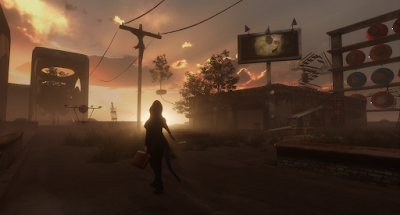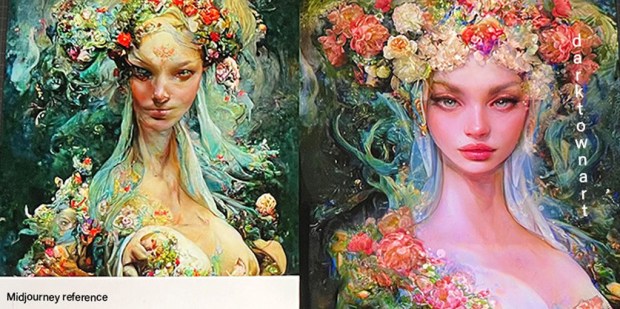 |
| Limbo |
I know this isn't a popular discussion with many as some really resist the notion of a video game being associated with traditional art yet I think it is a good discussion. There are a few obstacles which games face if they will eventually be embraced as "art". Well first, being termed a "game" has to change, as some are more experiences
now, the age old moniker of "video game" which conjures up images of
Pac Man, SuperMario, Minecraft, candy crush, angry birds etc all still linger over them
thus hampering a new perspective from emerging. Another problem might
be that with hundreds working on a game and no clear defining artist,
but rather a company as the face, then I think people may see them as
too corporate and profit driven to achieve the individual expression
which art often is romantically associated with. It should be remembered though that many artists such as Leonardo DaVinci used pupils and it was perceived that using highly skilled assistants meant that you, as a teacher of those assistants, were exceptional. For example, the teacher of Leonardo was named Andrea di Cione who also trained Sandro
Botticelli and others. Sometimes there is great prestige to be had in ones students but it is a very touchy subject. David Hockney, for example, put up a sign at a large show of his in 2012 saying "
All the works here were made by the artist himself, personally" it was considered a jab towards Damien Hirst who uses assistants to create some of his work yet allegedly keeps it secret, almost as though they are employees or, perhaps, the notion that an artist must create all their work themselves exists within the artist himself, thus the
 |
| A game called Crysis 3 |
desire to hide the participation of assistants. That is the interpretation anyway. I try to do everything myself personally, but then I am a control freak. I would be much more productive if I used assistants who could create objects almost identical to what I might create, yet not essential that I actually spend the time to make them.. like say a fork on a table top. Some artists think of it as collage or perhaps as composing an artwork using available talent.. others don't and in the end it really depends on how invested the original or main artist is during the whole process of creation.
 |
| Grand Theft Auto IV-Duncan Harris |
In regards to video games though, I don't think people see them as a singular identity yet, and some companies may have even tried to bypass this perspective by putting a human face on projects such as for game designer American McGee. For example though, in the image above for Crysis 3, there are a great many artists involved in that single screen shot, because remember that is a 3D virtual space which you can explore similar to SL, maybe climb up the vines and enter a window, I don't know I haven't played it. But there are people who just do lighting, some do the foliage, textures, structures, characters etc then there is the overall artistic director. They are more like movies now in scope and we have long accepted movies as art.
 |
| The Walking Dead - Leo and Clementine |
 |
| A timer counts down as you choose |
 |
| kenny remembers |
Anyway, back when I began creating art in Second Life and started to think of it as creating paintings you could enter and explore, incorporating duration and interaction with open ended choice, when I began to see it that way I decided that I must also play games then, because I wanted to be aware of what was going on elsewhere even if it was not the same as what I wanted to do but somewhat parallel. Before that I did occasionally play video games with friends, and I sucked badly at them, but at that time I decided that I would play any game that had a rating of 90% or higher that was story driven, and hopefully I could find parallels that related to creating virtual art in a open ended 3D environment. The image way up at the top is from one of the early ones I played called Limbo. A small group of people made it and it really is a beautiful game. Strangely violent, but beautiful. Well they are all violent usually, which I expect might be an obstacle to being considered art, but looking past this you can really see why they work in some cases. Limbo was not only beautiful, but contained a wide range of engaging puzzles. It was really rewarding to figure them out. The aesthetics were unquestionably artistic, but then the question almost is whether adding puzzles and gamifying art then disqualifies it from the art category. So every little while I am going to talk about a game I have tried if I have something, hopefully insightful, to say about it. Not as a game review, but rather as a way to look at how fully immersive artworks could potentially benefit from various successful tools that seem to work in "games". Knowing why something works is important I think, regardless of whether it could be used in ones artwork or not. Just recognizing it, for me, kind of helps to imagine other possibilities. Today I want to talk about one I have played recently called The Walking Dead. It is based on a comic book which is also a TV show with the same name, which many of you have likely watched. I was a bit apprehensive about playing this game as it is about zombies, and if it was like the TV show then there would be copious amounts of exploding heads and gore. There is some of that, well lots of that to be honest, but there are some really impressive dynamics in the game itself that captivated and intrigued me. The Walking Dead is not a huge game, not like Grand Theft Auto 5 from last year which collected 1 billion in sales... in just three days. I have not played that game either but I guess I should at some point. Anyway, so the walking dead is a unique experience and somewhat of a throwback to point and click adventures. Much of it is cut scenes and dialogue with some minor puzzle elements but its blend is more successful to me than many other games I have tried. It is almost like an interactive comic book and the aesthetics reflect that too in the artwork. What it has, that really absorbed me, is a high degree of interaction and investment in characters. In the first season you play as Lee, the man in the blue shirt, and you look after a little girl named Clementine who he discovers in a tree house, alone, after the zombie apocalypse. Clementine is adorable and it didn't take long for me to feel genuinely protective of her, which is an impressive feat for a game. Most games I have played don't really invest me in the characters so much, but this one really did. What is interesting about the game though is that it is fairly open ended in where you can lead the story. So essentially you meet up with other survivors and over the course of chapters you interact with them in various different ways which change the direction of the story depending on your choices. So for example at one point in the game two people I met were being attacked by zombies and I had to choose which to help. One a computer
 |
| you learn were your choices fit with others who played |
nerd type and the other was a journalist with a gun. I kind of liked the computer guy and he seemed helpless so I saved him not realizing that I was making the choice between who lived and who died. So I chose to help the computer guy in a world with no more electricity and let the person who was good with a gun die. Probably not the right decision I guess. There is an alternate story though if you make the decision to help the journalist, and it really plays on your mind whether you made the right decisions all along the way. You feel the moral implications of your choices too. You have to make hard decisions and once made there is no turning back.. whats worse (or better) is that you have a limited time to pick these reactions or responses, similar to how it would be in a real situation. So when someone asks you something you can't just sit there for a half hour thinking... as with a real conversation you have a short time to decide and this can result in a "fuck I shouldn't have said that" moment or two. And as you can see with the image above, the characters remember what you tell them or how you act, so if you lie or play favorites etc then you have to realize that people can catch you. For example you may have a limited amount of food to give out, not enough for everyone, and who you give it to changes the dynamic as well. Do you give it to people who don't seem to like you so that perhaps they will in the future, or strengthen relationships that are already strong... or do you give the food to the kids or to the adults who have to protect you? The game is interesting also in that you have to decide how you will be, morally, in this new world. So for example there was a character who was fairly useless and unable to adapt to the new reality of .. well zombies, yet I protected them, sided with them and burnt bridges all because it felt wrong to turn on this helpless person. Also in the back of my mind I think I felt that the game would reward me for helping this person, but not in this new world, you have to make hard decisions. But is all this a form of interactive art? It's really not important if it is, but to me I imagine how I feel after looking at something considered art by society, at that moment and then how it lingers with me. If I think of this game in a similar manner, then the way it made me think of characters and decisions long after I had finished playing, then yes it did get inside of me somehow, the reasons being that they created an immersive story which made me care about what happened to the characters, made me feel like I was influencing the outcome in a changing environment. It makes me dream of an artwork which you don't simply look at aesthetically but rather become invested in. Imagine if you could speak to the Mona Lisa and discover her personality. If you could be emotionally connected to her somehow that lingers past the moment you turn away from the painting. Can we enter an artwork and love it almost as an entity? That is what I am wondering. If anyone is interested in trying the walking dead game on a computer to see what I am talking about, then try Steam which offers game downloads. They forever are putting things on sale and I got the first and second season of the walking dead at a time when they were 75% off (which is a fairly regular occurrence) so like $6 and you can't go wrong at that price.
Duncan Harris is a video game photographer and has a site with some impressive unaltered images of the games he plays
http://deadendthrills.com/









Comments